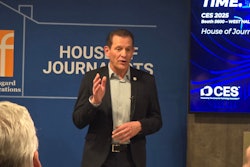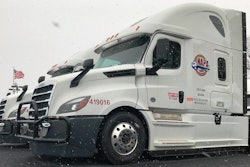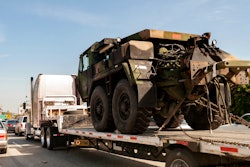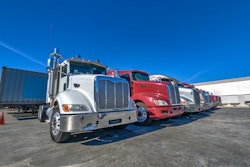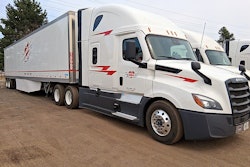In this week’s CCJ Tech Shorts, we’ll take a look at a newly patented safety technology, TomTom Orbis Maps’ immersive 3D lane geometry and a fleet cybersecurity software solution. CCJ Tech Shorts is a weekly roundup of technology in trucking.
Contents of this video
00:00 Tech Shorts intro
00:20 Immersive 3D mapping
01:36 Safety technology
02:31 Fleet cybersecurity software
00:00 In this week’s CCJ Tech Shorts, we’ll take a look at a newly patented safety technology, immersive 3D mapping and more.
00:20 Mapping company and location technologies specialist TomTom has rolled out new enhancements to its Orbis Maps, now offering immersive 3D lane geometry.
Through the expansion of its lane geometry data, powered by AI-enabled updates, TomTom Orbis Maps will be able to offer lane-level precision, measured in centimeters, on a global scale with continuous refreshes.
Most newly released vehicles now come equipped with advanced driver assistance systems (ADAS) that rely on high-definition maps for reliability and safety. But the heavy and costly resources required up until now to produce such maps have limited their availability to freeways and main roads. By harnessing the latest advances in AI, including fundamental vision models, TomTom Orbis Maps can now produce a 3D lane geometry for every single road. This feat is made possible by advanced technology that merges observations from crowdsourced production vehicles, dashcams, aerial and satellite imagery and lidar surveys, among others.
This will enable automakers to accelerate their automation ambitions, enabling navigation in complex urban environments. It also will benefit last-mile logistics, enabling transport companies to optimize their pickup and drop-off processes, leading to substantial time and cost savings.
01:36 The United States Patent and Trademark Office has awarded Israel-based transportation safety solutions technology company SaverOne a new patent entitled System and Methods for classifying a type of interaction between a human user and a mobile communication device in a volume based on sensor fusion.
The newly patented technology enhances driver safety by determining the relative position of cellphones in a vehicle, using various sensor fusion technics. The technology uses methods such as angle of arrival, time of flight and received intensity of radio frequency signals transmitted by the cellphone and received by SaverOne’s concealed in-vehicle phone location unit. The system accurately determines the cellphone’s location within the vehicle, ensuring that only the cellphone within the driver’s area is being blocked, preventing dangerous distractions to the driver of the vehicle like messaging apps while allowing other apps like navigation without user intervention or consent.
02:31 Werner Enterprises, a CCJ Top 250, has deployed Fleet Defender’s flagship technology Neural Sentinel, a software solution that integrates into vehicle platforms to detect anomalies, mitigate cyber threats, and ensure driver and vehicle safety by leveraging in-vehicle artificial intelligence and cloud-based analytics.
Built for OEMs and brought to the telematics market, Neural Sentinel offers a software-only cybersecurity intrusion detection system made to capture anomalous behavior on a vehicle’s network. This telematics-based software offers intrusion detection and fleet cybersecurity through existing telematics devices.
Werner has implemented the software across its entire fleet via Platform Science’s Virtual Vehicle platform, which enabled the software-only deployment directly into each vehicle without the need for additional hardware, though Fleet Defender does offer a hardware solution as well.
With this real-time protection and monitoring, Werner’s fleet managers will be equipped with immediate cyber and safety insights and alerts through Fleet Defender’s cloud-based Virtual Security Operations Center.
Fleet Defender’s CEO (Terry Reinert) said, “Now, fleet operators can access real-time intelligence and respond to threats against their vehicles immediately, improving both security and operational continuity.”

